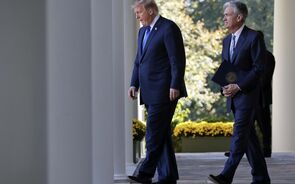China: Behind the mask
1 Mensagem
|Página 1 de 1
China: Behind the mask

SURVEY: BUSINESS IN CHINA
Behind the mask
Mar 18th 2004
From The Economist print edition
Hailed as the business opportunity of the century, China is bound to disappoint. Sameena Ahmad (interviewed here) examines the mismatch between excitable perception and sober reality
THE whole world's gaze is fixed on China—not just because the country is vast and growing rapidly, but because it profoundly affects the fortunes of companies everywhere. Around the globe, shelves are stacked with the low-cost goods churned out by “the world's workshop”. Chinese-based manufacturers suck in imports and dictate global prices of everything from steel to microchips. For foreign companies, a huge market beckons as China liberalises its relations with the rest of the world, having acceded to the World Trade Organisation in 2001.
China's progress since it first opened to foreign investment and reform in 1978 has been dazzling. Over the past 25 years, its real gross domestic product has expanded at an average of 9% a year. Growth in foreign trade has averaged 15% annually since 1978; China's trade surplus with America is now twice the size of Japan's. And every week, more than $1 billion of foreign direct investment flows into the country. All this testifies to the global integration of China's economy, now the sixth-largest in the world with a GDP of $1.4 trillion.
This rapid growth has ensured political stability. Whereas socialist regimes around the world have crumbled, China's Communist Party survived the 1989 Tiananmen Square uprising, the 1997 Asian crisis and last year's SARS virus without making concessions to democracy. The present leadership is well-educated, capable and pragmatic.
Internationally, China has become respectable, more a partner than a threat. The continuing debate about the “undervalued” yuan says more about partisan American politics than about Chinese mercantilism. Domestically, the government is well aware that its political acceptance derives solely from rapid economic growth, and will do whatever is necessary to meet its internal benchmark, an annual rise of 7%. China's leaders still call themselves communists, but they have become capitalists in practice. If they have a guiding philosophy, it owes nothing to Mao or Marx, but is best summed up by Deng Xiaoping's famous dictum: “It doesn't matter whether the cat is black or white, as long as it catches the mouse.”
The combination of growth, stability and potential has set off a tidal wave of foreign enthusiasm for China. Businessmen return from pilgrimages to Shanghai and Beijing convinced that this is China's century. Robert Bestani, head of the private-sector arm of the Asian Development Bank, calls the phenomenon “future shock”—change so rapid that it seems like a vision of the future. Dietmar Nissen, East Asia president of BASF, a huge chemical company, says that “the speed and scale of growth in China over the past 12 years is a miracle. It is a miracle that China is developing in such an orderly fashion.” Messianic terms are de rigueur when discussing the country's 1.3 billion consumers, its vast pool of low-cost workers and its need for every imaginable product and service. Goldman Sachs, an investment bank, predicts that by 2040 China will overtake America as the world's biggest economy.
This survey will cut through some of the hyperbole currently enveloping China. Progress there is as real as it is dramatic, but the country is still in transition from one political and economic system to another. The constraints imposed by the communist leaders (not least on themselves) have produced “a darker reality” behind the impressive statistics and soaring skylines, in the words of Orville Schell, a professor at Berkeley who knows the country well.
Look on the dark side
China needs 12m-15m new jobs every year just to keep pace with its population growth. It has to provide opportunities for the 800m people living in rural areas who have been left behind by the current boom, and a third of whom are under- or unemployed. It also has to deal with the 100m-150m migrant workers in the cities who have no job security, no long-term housing and no health care. And it needs a functioning pension system. No wonder the government is concerned, above all, with growth and job creation.
Currently there are worries that the economy is overheating. Bubbles are beginning to form in property, steel and cars, and power generation is running up against capacity constraints. China's real problem, however, is not inflation but overinvestment. In its quest for growth, the government has directed its state-owned banks to open the taps. Easy credit is producing massive overcapacity, leading to deflation, more bad debts and fewer new jobs. Already, nine-tenths of manufactured goods are in oversupply, yet investment in fixed assets last year grew by 30% and contributed 47% of GDP. Three-quarters of China's growth comes from capital accumulation, according to Paul Heytens and Harm Zebregs of the IMF, yet total factor productivity—a measure of overall economic efficiency—rose by only 2% a year in 1995-99.
Even for a developing economy, China's level of investment is unusually high. South Korea in its period of rapid growth in the 1970s and 80s had investment levels closer to 25% of GDP. But the biggest concern is that China's growth is staggeringly wasteful. Whereas in the 1980s and 90s it took $2-3 of new investment to produce $1 of additional growth, now it needs more than $4. Even India, often compared unfavourably with China, is now more efficient on that measure (see chart 1).
Only a very high domestic savings rate—around 40% of household income—and the uncontrolled exploitation of its natural resources make it possible for China to waste capital on this scale. But neither is sustainable. With little social welfare on offer from the state, the Chinese need to save to provide for themselves. And environmental degradation and noxious pollution are storing up costs for the future. All this means that China's growth will have to slow markedly unless its government wants to drown in debt—maybe not this year or next, but soon.
That is yet another risk for businesses already facing a host of challenges. China's developing capitalism is not solidly based on law, respect for property rights and free markets. It is unbalanced and potentially unstable. Multinational companies operating in China have often failed to produce an adequate return on their investment, or indeed a profit of any sort. That is partly their own fault, because they overestimated the market and underestimated the competition. With experience, more are getting it right. However, the business climate in China remains capricious and often corrupt.
Chinese firms contribute to that climate. State-owned enterprises are much more concerned to maintain patronage and employment than to generate profits, and even the best are not globally competitive. China's fledgling private businesses, by contrast, have shown astounding growth and produced the country's first crop of wealthy entrepreneurs. But they are still too small to offer an effective counterweight to the state sector.
It is in the financial sector that China's brand of “not wholly black, not fully white” capitalism works least well. The banks do not allocate capital rationally, and they are vulnerable to external shocks. Yet the potentially huge cost of reforming them will constrain the government's ability to finance economic growth. That will have implications for China's political stability, and for its attractiveness as a place in which to do business.
Fonte: The Economist
Um abraço,
MozHawk
1 Mensagem
|Página 1 de 1
Quem está ligado:
Utilizadores a ver este Fórum: ASimoes, Bar38, Bing [Bot], Burbano, carlosdsousa, iniciado1, jprgodinho, latbal, m-m, malakas, maturidade, nunorpsilva, O Magriço, Olhar Leonino, Pmart 1, vasco007 e 46 visitantes


